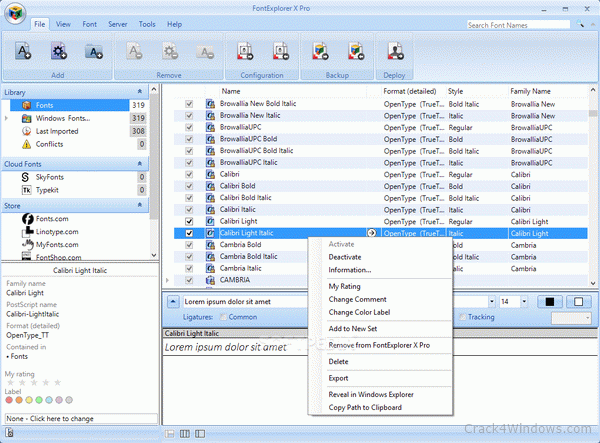I believe Suitcase was gumming up much of my computer. I've replaced it with Font Explorer X Pro. It has a similar interface to Suitcase without all the hassles. Just a thought for all you mac people.
- I've been trying to get Big Sur 11.0.1 working on my Matebook X Pro 2018 i7 model for the past 3 days, and I haven't gotten it working yet. Any help would be greatly appreciated. I am trying to install Big Sur onto my Samsung FIT Plus USB 3.1 128GB Flash Drive, which works just fine with Catalina. So far, I have tried three different methods.
- MacBook Pro 16' macOS 12 macOS Big Sur tvOS 14 watchOS 7 WWDC 2021 Guides. FontExplorer X Pro, and a third i've found.
Find out how to upgrade to macOS Big Sur.
If upgrading from macOS Sierra or later, macOS Big Sur requires 35.5 GB of available storage to upgrade. If upgrading from an earlier release, macOS Big Sur requires up to 44.5 GB of available storage.
MacBook Pro
- MacBook Pro (13-inch, M1, 2020)
- MacBook Pro (13-inch, 2020, Two Thunderbolt 3 ports)
- MacBook Pro (13-inch, 2020, Four Thunderbolt 3 ports)
- MacBook Pro (16-inch, 2019)
- MacBook Pro (13-inch, 2019, Two Thunderbolt 3 ports)
- MacBook Pro (15-inch, 2019)
- MacBook Pro (13-inch, 2019, Four Thunderbolt 3 ports)
- MacBook Pro (15-inch, 2018)
- MacBook Pro (13-inch, 2018, Four Thunderbolt 3 ports)
- MacBook Pro (15-inch, 2017)
- MacBook Pro (13-inch, 2017, Four Thunderbolt 3 ports)
- MacBook Pro (13-inch, 2017, Two Thunderbolt 3 ports)
- MacBook Pro (15-inch, 2016)
- MacBook Pro (13-inch, 2016, Four Thunderbolt 3 ports)
- MacBook Pro (13-inch, 2016, Two Thunderbolt 3 ports)
- MacBook Pro (Retina, 15-inch, Mid 2015)
- MacBook Pro (Retina, 13-inch, Early 2015)
- MacBook Pro (Retina, 15-inch, Mid 2014)
- MacBook Pro (Retina, 13-inch, Mid 2014)
- MacBook Pro (Retina, 15-inch, Late 2013)
- MacBook Pro (Retina, 13-inch, Late 2013)
MacBook Air
- MacBook Air (M1, 2020)
- MacBook Air (Retina, 13-inch, 2020)
- MacBook Air (Retina, 13-inch, 2019)
- MacBook Air (Retina, 13-inch, 2018)
- MacBook Air (13-inch, 2017)
- MacBook Air (13-inch, Early 2015)
- MacBook Air (11-inch, Early 2015)
- MacBook Air (13-inch, Early 2014)
- MacBook Air (11-inch, Early 2014)
- MacBook Air (13-inch, Mid 2013)
- MacBook Air (11-inch, Mid 2013)
MacBook
- MacBook (Retina, 12-inch, 2017)
- MacBook (Retina, 12-inch, Early 2016)
iMac Pro
Find out how to identify your iMac Pro.
- iMac Pro (2017)
iMac
- iMac (Retina 5K, 27-inch, 2020)
- iMac (Retina 5K, 27-inch, 2019)
- iMac (Retina 4K, 21.5-inch, 2019)
- iMac (Retina 5K, 27-inch, 2017)
- iMac (Retina 4K, 21.5-inch, 2017)
- iMac (21.5-inch, 2017)
- iMac (Retina 5K, 27-inch, Late 2015)
- iMac (Retina 4K, 21.5-inch, Late 2015)
- iMac (21.5-inch, Late 2015)
- iMac (Retina 5K, 27-inch, Mid 2015)
- iMac (Retina 5K, 27-inch, Late 2014)
- iMac (21.5-inch, Mid 2014)
Mac mini
- Mac mini (M1, 2020)
- Mac mini (2018)
- Mac mini (Late 2014)
Mac Pro
FontRevealer is a simple application to explore Unicode font substitution behavior and diagnose troublesome font issues in macOS Cocoa applications.
Q&A
Your screenshot shows the first character to be from a Hiragino font; why don't I see that on my system?
You might not have the Hiragino fonts on your system. In that case, some other font (perhaps Zapf Dingbats) will be used to render the ‘pointing hand' character.
Fontexplorer Mac
I select one character in the sample text, and two rows in the table are highlighted; what gives?

You have selected a Unicode composed character that is represented internally using multiple consecutive codes, each shown as a line in the table.
I select one row in the table, and an adjacent row gets highlighted too; what gives?
Fontexplorer X Pro Big Sur 2
The rows representing a Unicode composed character are automatically selected as a group.
What are these strange arcs and lines I see in the sample text box?
If you're seeing that sort of thing then you might have LaTeX fonts installed on your system. These can prevent proper rendering of Unicode characters due to incompatibilities with the Unicode character set used in macOS.
What can I do about these LaTeX fonts?
The LCIRCLE10, LCIRCLEW10, LINE10 and LINEW10 fonts (in the ‘LaTeX screen fonts' suitcase file) are the usual culprits. You might be able to disable them without loss of functionality if you don't need to render arcs, circles and lines in your LaTeX application. Symbol designer.
Can I change the textured window appearance?


- iMac (Retina 5K, 27-inch, 2020)
- iMac (Retina 5K, 27-inch, 2019)
- iMac (Retina 4K, 21.5-inch, 2019)
- iMac (Retina 5K, 27-inch, 2017)
- iMac (Retina 4K, 21.5-inch, 2017)
- iMac (21.5-inch, 2017)
- iMac (Retina 5K, 27-inch, Late 2015)
- iMac (Retina 4K, 21.5-inch, Late 2015)
- iMac (21.5-inch, Late 2015)
- iMac (Retina 5K, 27-inch, Mid 2015)
- iMac (Retina 5K, 27-inch, Late 2014)
- iMac (21.5-inch, Mid 2014)
Mac mini
- Mac mini (M1, 2020)
- Mac mini (2018)
- Mac mini (Late 2014)
Mac Pro
FontRevealer is a simple application to explore Unicode font substitution behavior and diagnose troublesome font issues in macOS Cocoa applications.
Q&A
Your screenshot shows the first character to be from a Hiragino font; why don't I see that on my system?
You might not have the Hiragino fonts on your system. In that case, some other font (perhaps Zapf Dingbats) will be used to render the ‘pointing hand' character.
Fontexplorer Mac
I select one character in the sample text, and two rows in the table are highlighted; what gives?
You have selected a Unicode composed character that is represented internally using multiple consecutive codes, each shown as a line in the table.
I select one row in the table, and an adjacent row gets highlighted too; what gives?
Fontexplorer X Pro Big Sur 2
The rows representing a Unicode composed character are automatically selected as a group.
What are these strange arcs and lines I see in the sample text box?
If you're seeing that sort of thing then you might have LaTeX fonts installed on your system. These can prevent proper rendering of Unicode characters due to incompatibilities with the Unicode character set used in macOS.
What can I do about these LaTeX fonts?
The LCIRCLE10, LCIRCLEW10, LINE10 and LINEW10 fonts (in the ‘LaTeX screen fonts' suitcase file) are the usual culprits. You might be able to disable them without loss of functionality if you don't need to render arcs, circles and lines in your LaTeX application. Symbol designer.
Can I change the textured window appearance?
Why yes, yes you can. Control-click in the textured border area of the window and you'll see a popup context menu. Select an alternate texture from the menu. (‘Aqua' is the default macOS window appearance.)
Download VirtualBox Image (IOS) of Juniper Router for GNS3: From here you can download 'JunOS Olive 12.1' VM image, you can run it with GNS3 for simulating juniper router. (Please note that this image is only provide to you for informational purpose and for GNS3 use.) What is JunOS Olive? Step 1: Right Click on JunOS Olive open with VirtualBox click on import Select Juniper IOS Ok. It will look like. Step 2: Open GNS3 All in one Click on Preferences Click on VirtualBox click on New select VM list such as JinOS 1 Click on Finish then Click on Ok. Juniper gns3 labs. These are the steps required to setup JunOS on GNS3 using Qemu: Acquire an image of JUNOS. The image file should be with the extension.img Open GNS3 and go to Edit - Preferences - Qemu. Adding Juniper IOS (JunOS) in GNS3 Once you have downloaded the JunOS VM image, next, open the Oracle VirtualBox console. Click File and select Import Appliance to import an existing VM.

